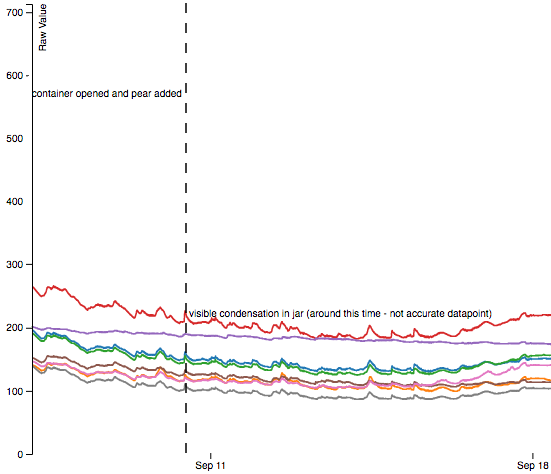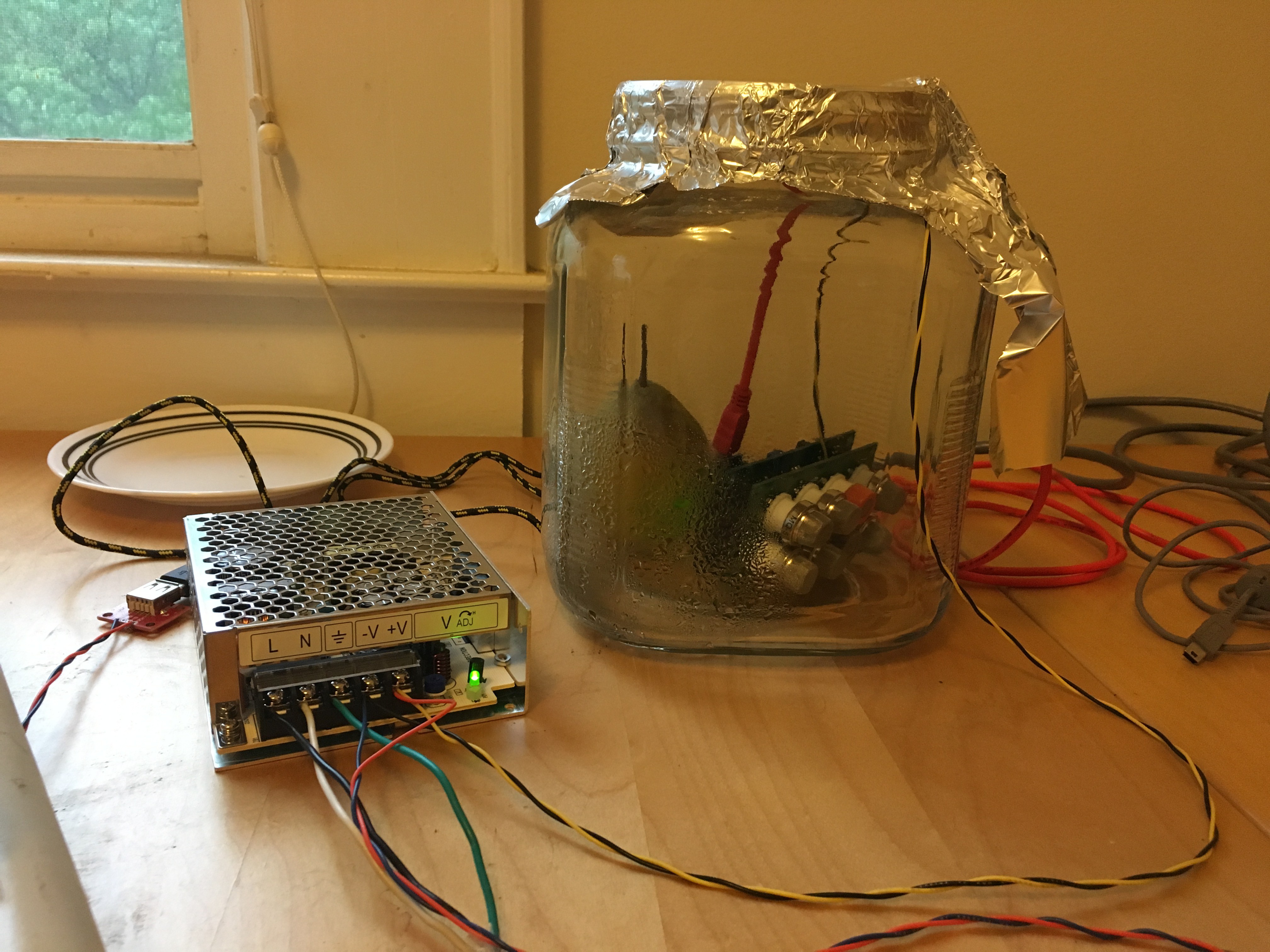Okay, enough faffing about with getting our sensors stable. Let's see if we can smell something! And heads-up, since this is my first real experiment, it's full of false starts.
I took a pear picked from this tree over Labor Day weekend and stuck in our sample chamber. It was quite unripe because it lasted in there for over a month. Since the sensors give off a fair amount of heat and the chamber was sealed with aluminum foil, lots of condensation built up on the chamber walls.
And not a lot smelliness to report:

To deal with condensation and to promote gas mixing within the chamber, I swapped out the aluminum foil for a Tyvek cover to allow water vapor to pass. I also threw in a USB fan:
At this point, I had to go out of town for several weeks and didn't want to leave the sensors running unattended, so I had to end the experiment here. When I came back, I could press my nose up to the Tyvek and smell over-ripe pear through the material, so it seemed like it was about as effective as having nothing on there at all.
XXX figure out way to sense fruit on a tree without having lots of condensation and heat influence
Unfortunately, these experiments were taking place right as fruit season was ending in Atlanta, so we didn't have a lot of options from which to choose. My only option at the time was a store-bought apple. I threw it in and returned to the aluminum foil covering along with the fan:

- Bad fruit choice. Store apples are basically ripe already and aren't going to change much unless you let it hang out for quite a while. Presumably whatever ethylene or other ripening gases produced by the apple are consumed by the sensor, so this sample chamber may actually slow the ripening process compared to an apple in any other sealed container.
- There is a big temperature effect on sensing! This experiment was run in mid-October, which is the height of leave-your-windows-open season in Atlanta. Also all the times are reported in UTC, so peak temperature seemed to be around 6 pm and lowest temperature was around 9:30-10 am. Apparently if we're going to sense a fruit on a tree we're going to have to do some real temperature compensation.
Until I could get a temperature sensor in place, I tried experimenting with the Atmega internal temperature sensor. This seemed like it would have a decent chance of working because our sensing setup is at equilibrium, so even though we're measuring die temperature it should track ambient temperature pretty well. And it did end up doing that, but seemed a little too narrow-ranged and coarse to rely upon:

XXX figure out how we're going to compensate for temperature in an actual tree-based sensor.
 Craig
Craig


Discussions
Become a Hackaday.io Member
Create an account to leave a comment. Already have an account? Log In.